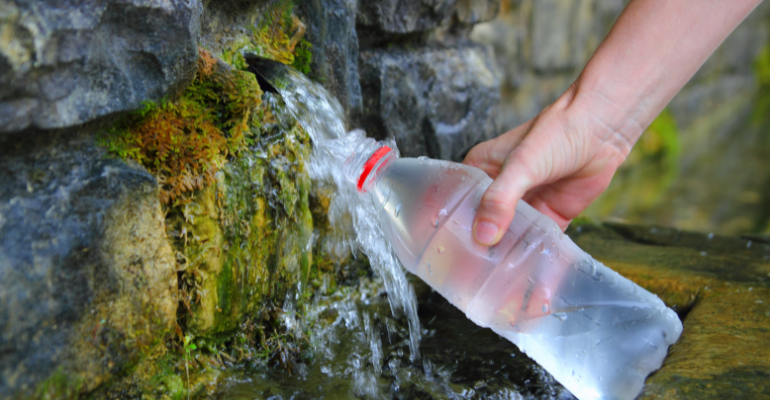
In many regions of the globe, water scarcity is a growing concern. Due to dwindling water resources and rising demand, developing innovative water conservation strategies has become imperative. One such solution is air-to-water technology, which has the potential to contribute significantly to natural groundwater conservation. This article will examine how air-to-water technology operates and its advantages for addressing water scarcity issues. Therefore, let's dive in and examine the effectiveness of air-to-water technology in conserving natural groundwater.
How does the technology of air to water work?
Air-to-water technology employs atmospheric water generation (AWG) to extract water from the air we breathe. It includes the following procedures:
Air Intake: The system draws in ambient air through an intake mechanism, commonly a fan.
Dust, particulate matter, and other impurities are removed from the air through filtration. This ensures that the produced water is pure and safe to drink.
Once the air has been filtered, it is swiftly cooled in a chamber for condensation. This causes the air's moisture to condense into particles of water.
The condensed water droplets are collected and stored in a reservoir or storage vessel before being utilized.
Purification and Treatment: The collected water may be subjected to additional purification and treatment procedures, such as UV sterilization or mineralization, to improve its quality, depending on the specific requirements.
The purified water is distributed for various uses, including potable, irrigation, and industrial applications.
How Air-to-Water Technology Can Contribute to the Conservation of Natural Groundwater
Groundwater is an essential source of potable water, but its overexploitation and depletion pose significant environmental problems. The following describes how air-to-water technology can aid in the conservation of natural groundwater:
By utilizing the moisture in the air, air-to-water technology reduces our dependence on conventional groundwater sources. This helps preserve natural groundwater reservoirs, whose replenishment can take years.
The air-to-water conversion process provides a renewable and sustainable water source. This technology guarantees a continuous water supply without depleting existing water resources because air is abundant and constantly replenished by nature.
As climate change causes changes in rainfall patterns and water scarcity, air-to-water technology offers a viable remedy for mitigating its effects. It can function effectively even in arid regions with limited precipitation, assisting communities in adapting to a changing environment.
Localized Water Production: Air-to-water technology can be implemented at the point of use, reducing the need for expansive water transportation infrastructure. This localized production minimizes water loss during distribution and reduces the carbon footprint associated with long-distance water transport.
Air-to-water technology can play a crucial role in ensuring water security in remote or underdeveloped areas where access to pure water is difficult. It provides a decentralized solution that ensures dependable access to potable water without requiring extensive infrastructure.
Air-to-water technology can provide a lifeline during periods of drought when traditional water sources are severely compromised. It can serve as an emergency water source, allowing communities and agriculture to survive difficult times.
By implementing air-to-water technology, we can effectively conserve natural groundwater and create a more sustainable water future for future generations.
Questions Frequently Asked (FAQs)
Can air-to-water technology function in humid environments?
Yes, air-to-water technology can function in humid environments. Generally speaking, higher humidity levels result in increased water production rates.
Can the water produced by air-to-water technology be safely consumed?
Yes, the water produced by air-to-water technology is filtered and purified to assure its safety for human consumption.
How much energy does air-to-water technology consume?
A: The energy consumption of air-to-water systems varies based on the system and its capacity. However, technological advancements have led to more energy-efficient solutions in recent years.
Can air-to-water technology be implemented on a large scale?
Yes, air-to-water technology can be scaled up for use on a large scale. It can be integrated into existing infrastructure or deployed independently to satisfy the water needs of communities or industries.
Are there any limitations to the air-to-water conversion process?
A: Although air-to-water technology offers numerous advantages, it has a few limitations. It is most effective in regions with moderate to high humidity levels and may be less effective in severely dry or cold environments.
How does the air-to-water process compare to conventional water sources?
A: Air-to-water technology offers an alternative to conventional water sources, thereby relieving pressure on groundwater and surface water supplies. It provides a scalable solution that can be implemented in various geographic locations.
The conservation of natural groundwater is of the uttermost importance, as water scarcity is a pressing global problem. Air-to-water technology offers an innovative solution to this problem. This technology reduces our reliance on traditional water sources, promotes sustainability, and increases water security by utilizing the moisture present in the air. The capacity of air-to-water technology to produce clean and safe drinking water can pave the way for a more resilient and water-rich future. Let us embrace this technology and conserve natural groundwater for future generations.